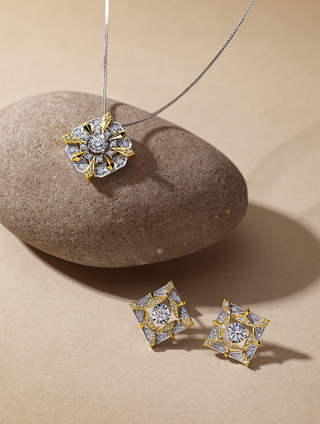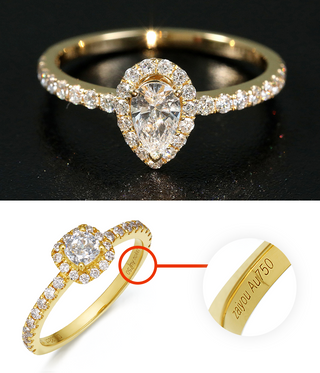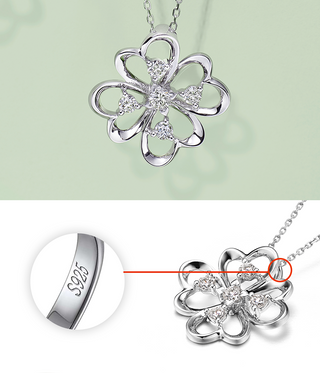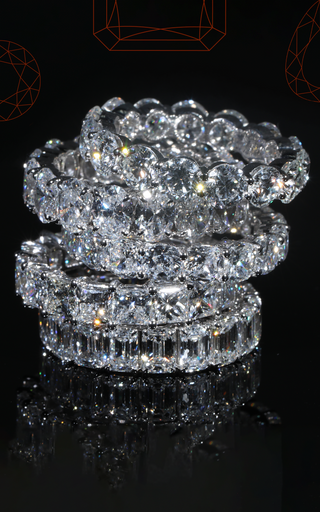
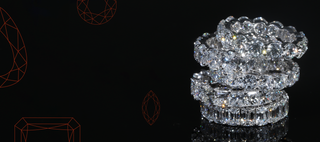
About Lab-grown Diamonds and Material
What is lab-grown diamonds?
Lab-grown diamonds, of course, are created in a laboratory rather than naturally forming over thousands of years within the Earth's crust. These diamonds have the same chemical, physical, and optical properties as natural diamonds.
Lab-grown diamonds have gained popularity due to their ethical and environmental advantages. They are conflict-free, as they are not associated with the mining industry. Additionally, their production requires less energy and water, and they do not result in the disruption of ecosystems like traditional diamond mining does.
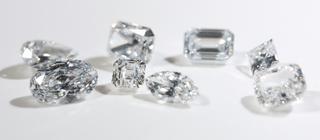
Is lab-grown diamond the same as cubic zirconia or moissanite?
No, growing diamonds is not the same as growing cubic zirconia or moissanite. While all three are lab-grown gemstones, they differ in terms of their chemical composition and crystal structure.
The biggest advantage of lab-grown diamonds compared to moissanite and cubic zirconia is their chemical composition and visual similarity to natural diamonds. Lab-grown diamonds are made of carbon, and the moh’s hardness is 10 (the most hardest one), have the same brilliance, sparkle, and hardness as natural diamonds, while moissanite and cubic zirconia can be visually similar to diamonds, they have different chemical compositions and crystal structures, resulting in lot differences in optical properties and durability.
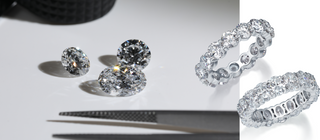
Why choose lab-grown diamonds over natural diamonds?
The biggest advantage of lab-grown diamonds over natural diamonds is their ethical and sustainable sourcing. Lab-grown diamonds are created in a controlled laboratory environment, which eliminates the need for environmentally damaging and socially harmful mining practices associated with natural diamonds. This ensures that lab-grown diamonds are free from human rights issues, such as child labor and worker exploitation, commonly associated with diamond mining. Additionally, lab-grown diamonds have a significantly smaller carbon footprint and require fewer resources to produce, making them a more environmentally friendly choice.
What is the significance of lab-grown diamonds for Zaiyou Jewelry?
For Zaiyou Jewelry, we believes that lab-grown diamonds are much more than just a substitute for natural diamonds. Diamond as a materials with extreme beauty and brilliance and also its Mohs hardness of 10(The hardest material on earth). The rising of lab-grown diamonds allows us to unleash the beauty of diamonds, enabling us to enjoy the dazzling brilliance of diamonds, while also creating more beautiful and creative works. This is not possible with expensive natural diamonds, and even if natural diamonds could create high-end jewelry, the prices would be beyond reach.
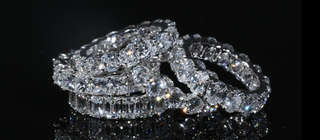
Do lab-grown diamonds have grading certificates?
Certainly, lab-grown diamonds were internationally recognized as "lab-grown diamonds are diamonds" in 2018. Their grading standards fully adhere to the 4C grading criteria used for natural diamonds. International authoritative certification agencies, such as GIA, IGI, ALGT, and others, provide grading for lab-grown diamonds. These grading certificates can be traced on the respective agency's official website.
After grading, each agency will laser engrave a specific identification code on the girdle of the diamond, and the numbers correspond to the certificate number of the diamond grading certificate.
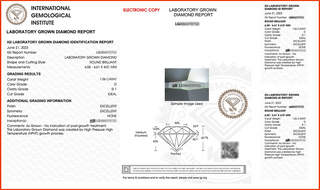
How can I ensure that the diamond I purchased matches the certificate I received?
You can verify the consistency between the diamond you purchased and the certificate you received by examining the laser inscription on the diamond's girdle using a magnifying glass or microscope. Zaiyou Jewelry also provides full tracking emails for customers who purchase diamonds with certificates. The specific process is as follows:
- When you wish to order a jewelry product with a certified main diamond, you can select the desired diamond grade and proceed with the order and payment.
- After payment, we will confirm the certificate and provide photos of the main diamond via email within 1 business day. Once you confirm, we will proceed with the production process and inform you of the required timeframe.
- Once the item is ready, we will send you photos of the jewelry, including detailed images and the laser inscription on the set diamond, through email. During shipment, we will send the diamond certificate together with the jewelry. If you prefer separate shipping of the diamond certificate and the jewelry, please inform us in advance.
- Upon receiving the item, you can conduct a re-inspection at any time by visiting a local appraisal institution or examining the details of the jewelry and the laser inscription on the diamond using a magnifying glass. Zaiyou Jewelry guarantees that the product you receive will be identical to what you purchased.
FAQ
If you have more questions about lab-grown diamonds and jewelry, please click on the FAQ section or contact us for assistance. We will respond to all emails within two business days.
What is 9K, 10K, 14K, 18K mean?
The designations 9K, 10K, 14K, and 18K refer to the purity or fineness of gold used in the piece. The "K" stands for karat, which is a unit used to measure the gold content. Here's what each designation signifies:
9K gold:
It means that the gold content in the jewelry is 9 parts out of 24. This would make it around 37.5% pure gold, and the remaining 62.5% consists of other metals.
10K gold:
It indicates that the gold content in the jewelry is 10 parts out of 24, making it approximately 41.7% pure gold, with the rest being alloyed metals.
14K gold:
This designation means that the gold content in the jewelry is 14 parts out of 24, equating to around 58.3% pure gold. The remaining 41.7% comprises other metals.
18K gold:
It signifies that the gold content in the jewelry is 18 parts out of 24, making it around 75% pure gold, while the remaining 25% consists of alloyed metals.
It's important to note that the higher the karat weight, the more pure gold the jewelry contains. However, higher karat gold may be softer and more prone to scratches or other damage, so it's common for jewelry makers to use lower karat gold (such as 14K or 18K) to strike a balance between durability and gold content. Every piece jewelry of Zaiyou has different gold content, make sure you check all descriptions before purchase.
Plus, if you want to customize different gold content in certain piece, please feel free to contact us! We are be able to do 4K, 9K, 10K, 14K, 18K, different content comes from different price.
What are the characteristics of the karat gold jewelry? How should karat gold products be maintained?
Karat gold is relatively harder than pure gold, making it ideal for setting gemstones. Generally, karat gold comes in several common colors such as yellow gold, white gold, rose gold, and black gold. Apart from yellow gold, the formation of other colors in karat gold is often achieved through electroplating. Electroplating can typically cause color changes or fading after 1-2 years of wear, in which case you would need to have your jewelry refinished.
It's important to note that there is one situation where karat gold may turn to red, and that is when you use cosmetics containing mercury and they come into contact with your karat gold jewelry. In such cases, it is advisable to have the jewelry refinished and to check the ingredients of your cosmetics.
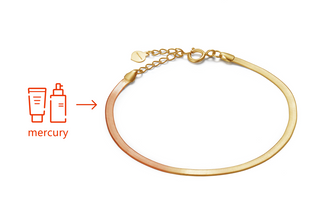
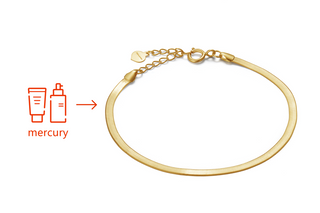
Karat gold is not very resistant to scratching, so the metal surface is more susceptible to being scratched. If you accidentally scratch or strike the metal surface forcefully, it may leave marks. In such cases, you can have your jewelry sent to a bench jeweler for refinishing.
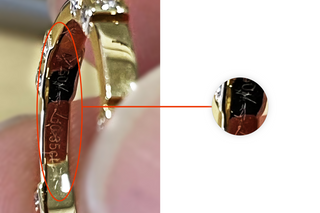
You don't have to worry about karat gold products being wasteful or environmentally unfriendly. Karat gold products are sustainable metal products, which means that when you want to replace your old jewelry, you can melt down your old jewelry to make new pieces or you can inquire about selling prices at local jewelry stores.

What is 925 sterling silver mean?
925 sterling silver, also known as sterling silver or simply 925 silver, is a type of silver alloy that is commonly used in jewelry making. It consists of 92.5% pure silver and 7.5% of other metals, usually copper.
What are the differences between 925 silver products and karat gold jewelry?
Composition and characteristics
925 sterling silver is an alloy consisting of 92.5% pure silver and 7.5% of other metals, typically copper. On the other hand, karat gold refers to the purity of gold in a piece of jewelry. It is measured in karats, with 24 karat gold being 100% pure gold. However, pure gold is soft and not suitable for most jewelry applications. Therefore, karat gold is typically alloyed with other metals such as copper, silver, or zinc. The resulting alloys, such as 18 karat gold or 14 karat gold, have a lower gold content (e.g., 75% or 58.3% gold) and are stronger and more resistant to scratches. Karat gold jewelry can come in various colors, such as yellow gold, rose gold, or white gold.
Tarnish and Oxidation
925 sterling silver is more susceptible to tarnish and oxidation compared to karat gold. When exposed to air and certain substances like sulfur, silver can develop a dark tarnish layer, causing it to lose its shine. Regular cleaning and maintenance is required to keep sterling silver jewelry looking its best. In contrast, karat gold is more resistant to tarnish and oxidation.
Hardness and Scratch Resistance
Karat gold, especially alloys like 18 karat or 14 karat gold, is generally harder and more scratch-resistant than 925 sterling silver. Silver is a relatively soft metal, and while the addition of other metals in sterling silver improves its durability, it is still more prone to scratches and dents compared to karat gold.
How do I maintain for 925 silver jewelry?
The 925 silver jewelry sold by Zaiyou Jewelry is plated with a thick layer of 18K gold, and with proper care, it can maintain its non-oxidized condition for over two years. Here are some steps you need to follow to maintain it:
- Avoid wearing jewelry when sweating heavily or applying chemicals such as cosmetics or perfumes.
- Try to avoid wearing jewelry while swimming or playing in the sea.
- Promptly wipe the jewelry with a soft, clean towel after wearing it.
- Protect the jewelry from being struck or scratched.
If your jewelry starts to oxidize and the surface turns black/ copper red/brownish red, you can take it to a local bench jeweler
for refurbishment.
FAQ
If you have more questions about metal material , please click on the FAQ section or contact us for assistance. We will respond to all emails within two business days.



